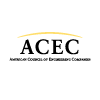The COVID Effect on The Buildings Where We Live and Work
COVID-19 has momentarily reversed the historical trend of Americans moving into cities and close-in suburbs. The vast majority of people in the United States live in these high-density areas, but the pandemic has highlighted the dangers of living in close proximity to others. Will this cultural U-turn continue or is it a temporary phenomenon? And what other impacts will the pandemic have on the where and how we live in the future?
To answer these questions, the ACEC Research Institute brought together four building-design experts for a roundtable discussion on “The Buildings We Live and Work In”: AKF Managing Partner Dino DeFeo, Thornton Tomasetti Co-CEO Peter DiMaggio, Skidmore, Owings & Merrill Associate Director Arathi Gowda, and HR&A Advisors Partner Kate Wittels. In a spirited hour-long discussion, the panelists reached four key conclusions:
The exodus from cities and close-in suburbs will continue as long as the danger remains. In New York City — the initial epicenter of the outbreak — the rental market has tanked and in Washington, D.C.’s exurbs new home construction has taken off. Once the pandemic wanes, however, the outflow will stop and likely reverse as people miss the convenience and social, cultural, entertainment options of city living.
Buildings will combine home and work life. People will look to live closer to where they work. In some cases, residential buildings will offer office space where residents can work remotely (but not in their living space). In other instances, corporate offices will share buildings with residences.
The health and well-being of the residents will drive building design. As residents re-prioritize what is important to them, the market will follow. For example, in the past, residents may have valued indoor parking; in the future, however, with people working from home more often, they may prefer a balcony where they can enjoy the fresh air or more square footage to accommodate a home office.
Current school buildings will need to be redesigned to focus on the health and safety of students. School districts across the country are working with design professionals to determine how to improve the health safety of their existing buildings. In the near-term, solutions will include social distancing and retrofitting HVAC systems to purify air. Long-term, redesigns will need to alleviate crowded classrooms and hallways.
Click here to view the roundtable.
